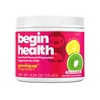Best Magnesium-Rich Foods for Kids Who Hate Vegetables
share this article

Although magnesium plays a key role in bone development, energy, and electrolyte balance, many picky eaters fall short because green vegetables are one of the main sources (1). If your kiddo has symptoms like fatigue, low appetite, or muscle cramps, it may be time to look for other ways to add magnesium to their diet.
The good news is there are plenty of non-vegetable sources of magnesium to help your little one meet their goals.
How Much Magnesium Do Kids Need
Getting enough magnesium starts with knowing how much your little one needs.
Daily magnesium intake varies by age (1):
-
0-6 months: 30mg
-
7-12 months: 75mg
-
1-3 years: 80mg
-
4-8 years: 130mg
-
9-13 years: 240mg
-
14-18 years (male): 410mg
-
14-18 years (female): 360mg
Top Magnesium-Rich Foods That Aren’t Vegetables
Pumpkin Seeds | 156mg per 1 oz
Pumpkin seeds are a great “topper” to yogurt, cereal, or baked goods. Roasting them can make the texture more appealing and easier to digest. They also provide a good boost of fiber and healthy fats like omega-3s.
Quinoa | 118mg per 1 cup cooked
Quinoa is a versatile carbohydrate option that works well in a bean salad, baked into a crispy topping, or even mixed into baked goods. Plus, it’s a higher-protein carbohydrate choice.
Chia Seeds | 111mg per 1 oz
Chia seeds are easy to mix into foods your child already enjoys, like yogurt, oatmeal, smoothies, or nut butter. Just a small amount adds a boost of fiber and magnesium without big changes to the taste or texture.
Brown Rice | 86mg per 1 cup cooked
It’s always helpful to have nutrient-dense carbohydrates! If your kiddo struggles to eat brown rice, try mixing it with their preferred rice like white or jasmine.
Almonds | 77mg per 1 oz
Almonds are a great source of healthy fats, magnesium, and protein. You can serve them whole, bake into granola, or offer almond butter as a spread or dip.
Cashews | 74mg per 1 oz
Cashews tend to be a picky eater-approved nut because of their soft texture and sweeter taste. They work well as a snack or blended into creamy sauces or dips.
Peanuts | 63mg per ¼ cup
Peanuts and peanut butter are a great picky-eater option that packs in the magnesium! They’re easy to pair with fruit, spread on crackers, or stir into yogurt and oatmeal for added nutrition.
Soymilk | 61mg per 1 cup
Soymilk is one of the most nutrient-dense milk alternatives. It's a simple swap in cereal, smoothies, or recipes where you’d normally use regular milk.
Black Beans | 60mg per ½ cup
Black beans are full of fiber and magnesium. If your kiddo isn’t a fan of the texture, try mashing them into quesadillas, blending them into dips, or stirring them into sauces.
Plain Yogurt | 42mg per 8 oz
Plain yogurt offers magnesium, protein, and gut-friendly probiotics. Serve it as a snack, freeze it into yogurt bark, or mix it with condiments for a creamy sauce.
Banana | 32mg per banana
A ton of picky eaters struggle to eat veggies, but love fruit - this is where banana comes in! As the highest magnesium fruit, its a great option for snack or as a side with a meal.
How to Get Picky Eaters to Try New Foods
Make Small Changes to Current Favorites
Instead of introducing a completely new food, make small changes to their current favorite foods. Changing the taste slightly (adding spice or a new flavor), texture (cutting differently), type (brand of food), or temperature can be a less threatening way to incorporate “newness” into their diet.
Get Them Involved in the Kitchen
Not only does food prep give kiddos internal motivation to try the foods they worked hard to prepare, but it also gives them sensory exposure before feeling pressure to try the food. Being able to touch, feel, and smell new foods before tasting them can make them feel less overwhelmed at the table.
Introduce Using Play
If you have a younger kiddo, introducing these foods with a “crunching content” or pretending to be animals can make them feel less pressure and more internal motivation. If you have an older kiddo, incorporate these foods into their play with a craft, book, or watching a cooking show together.
When to Consider a Supplement
If your picky eater refuses vegetables and most magnesium-rich foods, it may be worth talking to their pediatrician. Many multivitamins don’t include magnesium, so a separate supplement may be needed.
Summary
Although one of the richest sources of magnesium is green vegetables, picky eaters who hate vegetables can meet their magnesium needs through beans, seeds, nuts, and even certain carbohydrates.
















